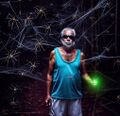Lenses: Difference between revisions
No edit summary |
No edit summary |
||
| Line 15: | Line 15: | ||
|HideTrails=yes | |HideTrails=yes | ||
|HideGuides=yes | |HideGuides=yes | ||
|ShowShadows=yes | |||
}} | }} | ||
[[File:Lenses_Page.jpg|alt=Lenses Page|thumb|[[Lenses]]]] | [[File:Lenses_Page.jpg|alt=Lenses Page|thumb|[[Lenses]]]] | ||
Latest revision as of 21:23, 15 September 2023

Lenses, in the context of the Beacons of Everyday Enlightenment represent more specific concepts and practices through which we can understand the rich meaning of each Beacon. There are Primary Lenses, which are the most commonly understood and most robust meditative concepts, and there are Other Lenses which are a collection of other closely related ideas for that Beacon.
If you don't already know about each of the Beacons start there, and take a look at the different Lenses and Landmarks that you can use on your journey. If you are already familiar with the Beacons and Lenses, you can skim through these overviews to see which you might want to look into next.
Lenses of Attention
Mindfulness

Mindfulness is a central theme of Attention. It refers to awareness of our thoughts, feelings, bodily sensations, and the surrounding environment. Mindfulness involves a kind of nonjudgmental observation, in which each thought, feeling, and sensation is acknowledged and accepted as it is. By cultivating mindfulness, one can develop a greater sense of presence, clarity, and equanimity. This attentive presence fosters a greater understanding of the nature of consciousness and is critical to the other Lenses of Attention.
Non-Judgment

Non-Judgment means experiencing the present moment as it is, without labeling it as good or bad, right or wrong. In practicing non-judgment, you allow yourself to experience life fully, without the filter of preconceived notions or biases. This Lens also helps in cultivating an accepting attitude towards your own thoughts and emotions, thereby enriching your overall experience of the present moment.
Presence

Presence is about being fully here and now, not lost in thoughts of the past or future. It involves directing your full attention and consciousness to the activities and experiences of the current moment. Cultivating presence is key to living each moment to its fullest.
Insight

The practice of Insight is to develop the ability to see beyond illusions and to see the true nature of reality. It is the direct and intuitive understanding of the true nature of all mental and physical phenomena. The practice of Insight aims at understanding that things impermanent and unstable, that they are unsatisfactory and imperfect, and that they are not self.
Intention

Intention (especially in relation to Mindfulness) is the practice of observing one's intentions, whereby individuals can develop a deeper understanding of their motivations and thought patterns. This awareness can lead to greater ethical clarity and personal growth. Intention is closely related to some of the Lenses of Adaptation, because part of being adaptable is being aware of our own opinionated way we have of experiencing reality, which informs our ability to practice Non-Seeking and Non-Attachment.
Lenses of Adaptation
Impermanence

Impermanence, a fundamental concept deeply woven into the fabric of existence, is the understanding that all phenomena, without exception, are in a constant state of change. This Lens focuses on observing the transitory nature of thoughts, emotions, sensations, and external circumstances. When we fully internalize this concept, we realize that everything we experience — joy, suffering, thoughts, identities — are not static but are dynamic and fleeting. This understanding leads to an acceptance and even an embracing of change, contributing to a sense of calm, resilience, and peace amidst the ebb and flow of life. The reality of impermanence invites us to live fully in the present moment, cherishing it as a unique and unrepeatable snapshot of life.
Non-Seeking

Non-Seeking is about breaking free from the endless pursuit of desires. It's recognizing that constant wanting often leads to a state of dissatisfaction. Instead, the practice of non-seeking encourages us to find contentment in the present moment, without constant longing for something else. The ultimate aim of non-seeking is to foster inner peace and satisfaction, diminishing the turbulence of ceaseless desire and thereby enabling a more harmonious adaptation to life's unfolding.
Non-Aversion

Non-Aversion, as a concept, invites us to avoid repulsion from negative experiences or sensations. It's about accepting and facing uncomfortable situations, feelings, or thoughts without trying to escape from them. Applying Non-Aversion in our lives means developing a greater resilience to adversity and discomfort. The end-goal is to cultivate emotional balance and courage, promoting a healthier and more flexible approach to life's challenges.
Emptiness

Emptiness is another way of understanding the nature and reality of Impermanence and Nonself. Starting with the recognition that all things lack inherent existence and are empty of self-nature, and leading to the realization that all things are Interconnected and therefore there is also no permanent or separate self. Each of these understandings brings greater peace and clarity, and also contributes to our own Non-Seeking, Non-Aversion and Non-Attachment.
Middle Way

The Middle Way is a balanced approach to life and practice, avoiding extremes of indulgence and asceticism. It means understanding that Non-Aversion and Non-Seeking are ways of understanding reality, not goals to be aspired to. Similarly, many of the Lenses could be taken to unhealthy extremes or twisted in their meanings. The Shadows give examples for many of the Lenses.
Gratitude

The practice of Gratitude in the context of the Lens of Adaptation is specifically about amplifying the parts of experience that represent a journey towards Enlightenment. This amplification leads to greater resilience and adaptability. For example, when we are faced with challenges, we are already primed with the knowledge that we are capable of overcoming challenges and experiencing that satisfaction. We are also aware that life will always be changing and that we can find peace and clarity under many different circumstances. These insights are especially relevant in our practice of Non-Seeking and Impermanence.
Dependent Origination

Dependent Origination is a way of understanding existence as a whole made up of intimately connected parts. We may often think in terms of "cause and effect", and another insight is to see that things are so interconnected that a simple cause/effect relationship is a needlessly reductive perspective. Additionally, we can see that all things in our consciousness do not come about on their own but have a dependency on other things simply for them to exist in their current form. To take an extremely simple example, you may enjoy some coffee or tea, but how dependent is that enjoyment on the mug holding your drink? Another aspect of Dependent Origination is that just as everything relies on other things for their existence, so do those same things enable the existence of other things. Closely related to Dependent Origination are the Lenses of Impermanence and Emptiness, which all taken together can show us how everything we experience lacks a permanent or substantive quality when understood through these concepts.
Special Composition

The idea of Special Composition is about recognizing that the world as we experience it is broken down into many, many arbitrary ways of conceptualizing how things work together or against each other. Special Composition touches on each of the Beacons, but is placed within the Beacon of Adaptation because it deals primarily with the way we perceive "things" which enables the other Lenses of Adaptation such as Non-Seeking and Impermanence.
Lenses of Association
Nonduality

Nonduality, or "not-two", refers to a state or experience in which there is no distinction between the subject and object, or the self and the external world. It implies a sense of oneness and a realization that there's no separation between you and everything else. Importantly, this includes thoughts and emotions. Nonduality is an essential part of Association as Unlearning the Self includes unlearning the way we perceive subject and object.
Nonself

Nonself is a concept that contends there is no unchanging, permanent self or essence in any phenomenon or being. In practical terms, this means understanding that our identity or "self" is constantly changing and is composed of various components such as our body, feelings, perceptions, mental formations, and consciousness. The concept of nonself can be practiced by observing the ever-changing nature of thoughts, feelings, and physical sensations without clinging to any of them as defining your "self". The objective of realizing nonself is to alleviate suffering, as clinging to a concept of a permanent self can lead to dissatisfaction when that self inevitably changes.
Decentering

Decentering refers to a cognitive process in which one views one's thoughts and emotions as temporary events in the mind, rather than as reflections of the self. Essentially, it's about having a detached awareness where you're observing your thoughts and feelings from a distance without becoming entangled in them. This can be practiced by noticing thoughts and feelings as they arise and acknowledging them without judgment. Remember that thoughts and feelings are not facts and they don't define who you are. The end-goal of decentering is to gain a greater sense of calm and control over your emotional responses, leading to increased psychological flexibility and well-being.
Witnessing

Witnessing is a practice where one observes their own mind, thoughts, and emotions from a detached perspective. It's like being a neutral observer or "witness" to your own experiences, without judgment or attachment. This can be practiced in everyday life by consciously paying attention to your thoughts and feelings as they arise, without getting swept up in them. By becoming a "witness" to your own mental processes, you can gain a greater understanding of yourself and your reactions to different situations. The ultimate goal is to develop a greater sense of self-awareness and self-understanding, leading to increased control over your thoughts and emotions.
Interconnectedness

Interconnectedness is the understanding of the fundamental links and relationships between all phenomena. It points to the truth that everything is interconnected and interdependent, making the notion of an isolated 'self' a limited perspective. Practically, this means seeing oneself as part of a larger whole, acknowledging how our actions affect others and the world around us. By maintaining a mindful awareness of the effects of our actions and recognizing the interconnected nature of existence, we can foster a more compassionate, considerate way of living. The end goal of understanding interconnectedness is to foster a greater sense of responsibility, compassion, and kinship with all forms of life, contributing to personal growth and a more harmonious society.
Generosity

Generosity is the practice of selfless giving often through acts of charity and kindness. Taken further, and put in the context of the Beacon of Association, practicing Generosity means developing wisdom, contentment and freedom from suffering. As such, Generosity is a perfect way to supplement your practice of Non-Seeking and Non-Attachment. Generosity also becomes easier and more natural as we practice Other-Centeredness and Interconnectedness.
Other-Centeredness

Other-Centeredness, the opposite of egocentrism, involves considering the well-being and perspectives of others as equally important as one's own. It emphasizes a compassionate and selfless approach to interacting with the world and recognizing the interconnectedness of all beings. This idea is central to concepts like Loving-Kindness and Compassion.
The Headless Way

The Headless Way is an established school of thought that aligns very closely with the goals of Everyday Enlightenment - it is recommended to fully explore this concept and incorporate it into your understanding of both Nonduality and Mindfulness.
In a nutshell, The Headless Way starts by experimenting with your perception of your own head and face and unlearning some illusions about the center of consciousness. Experiencing The Headless Way means experiencing and understanding important truths about who you truly are, the nature of your own consciousness, and your relationship to the universe as a whole, and the present moment in space and time.
